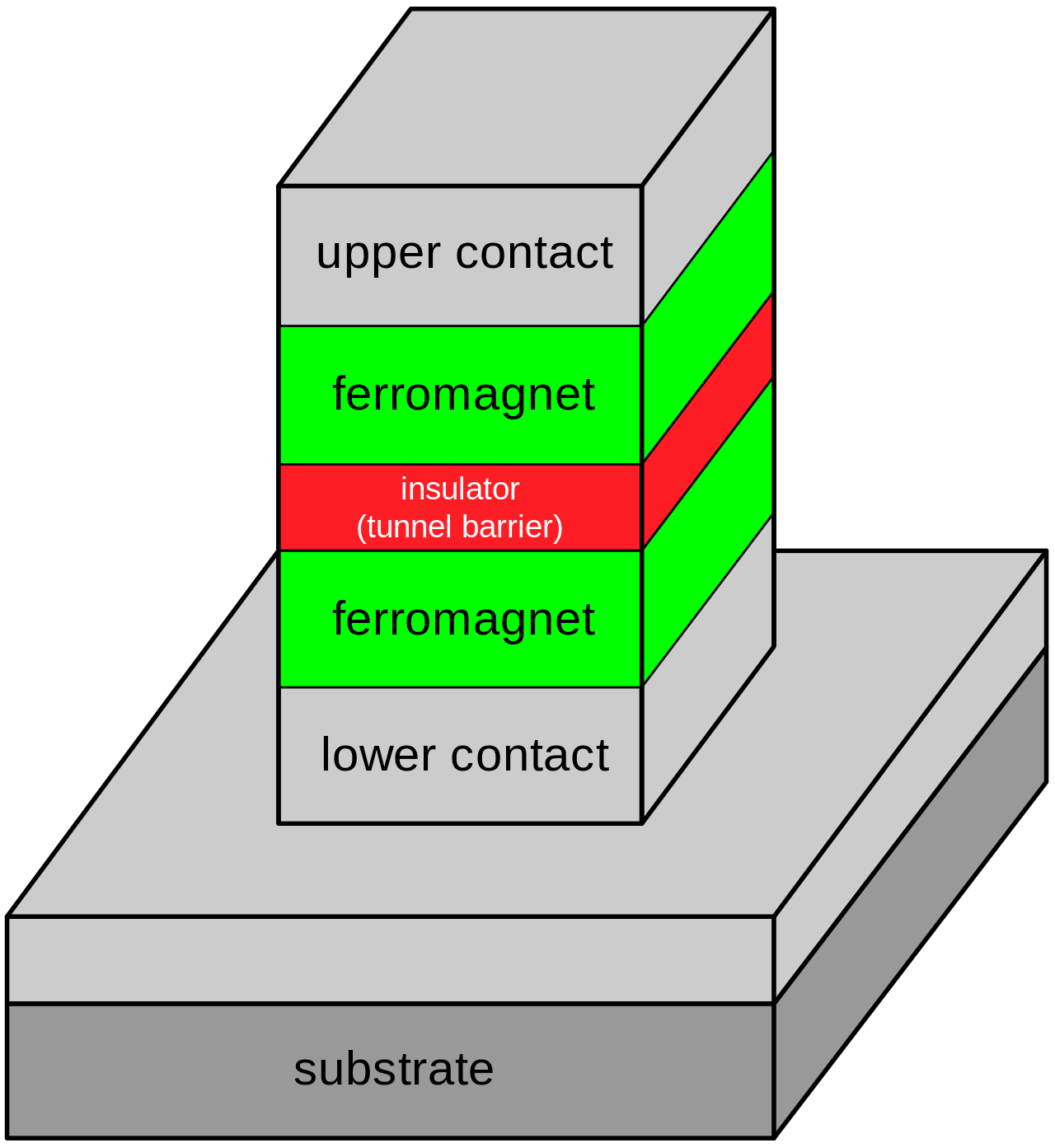Tunneling Magnetoresistance: Harnessing Quantum Tunneling for Spintronics Applications
What is Tunneling Magnetoresistance?
Imagine a pair of filters connected by a narrow tube. The filters represent ferromagnetic layers, and the tube symbolizes a thin insulating barrier. The alignment of the filters' pores determines the flow of water (electrons) through the tube. When the pores are aligned, water can pass through the tube more easily, leading to a higher flow rate (lower electrical resistance). Conversely, when the pores are misaligned, the passage of water is hindered, resulting in a lower flow rate (higher electrical resistance). This is a simplified analogy for tunneling magnetoresistance (TMR), a quantum mechanical phenomenon that occurs in magnetic tunnel junctions (MTJs), where two ferromagnetic layers are separated by a thin insulating barrier. TMR is characterized by a change in electrical resistance depending on the relative magnetization orientation of the ferromagnetic layers.
This effect has revolutionized the field of spintronics, enabling the development of high-density magnetic storage devices and sensitive magnetic field sensors. Just as the water flow through the tube depends on the alignment of the filters' pores, the electrical resistance in an MTJ varies based on the parallel or antiparallel orientation of the ferromagnetic layers' magnetizations.

Mechanism of Tunneling Magnetoresistance
The TMR effect relies on the spin-dependent tunneling of electrons through the insulating barrier. In ferromagnetic materials, the electronic band structure is split into majority and minority spin states, leading to different densities of states at the Fermi level for each spin orientation. When the magnetizations of the ferromagnetic layers are aligned parallel, electrons with the same spin orientation can tunnel through the barrier more easily, resulting in a low-resistance state. Conversely, when the magnetizations are antiparallel, the tunneling probability is reduced, leading to a high-resistance state.
The TMR ratio, which quantifies the change in resistance between the parallel and antiparallel states, is defined as:
TMR = (RAP - RP) / RP
where RAP and RP are the resistances in the antiparallel and parallel magnetization configurations, respectively. Higher TMR ratios indicate a larger difference in resistance between the two states, which is desirable for practical applications.
Materials for Tunneling Magnetoresistance
The choice of materials for the ferromagnetic layers and the insulating barrier plays a crucial role in achieving high TMR ratios. Some of the commonly used materials for TMR devices include:
- Ferromagnetic Layers: Iron (Fe), cobalt (Co), nickel (Ni), and their alloys, such as CoFeB, are widely used as ferromagnetic electrodes in MTJs. These materials exhibit strong spin polarization, which enhances the TMR effect.
- Insulating Barriers: Magnesium oxide (MgO) has emerged as the preferred insulating barrier material for TMR devices. The crystalline structure of MgO provides a spin-filtering effect, allowing electrons with a specific spin orientation to tunnel through more efficiently, leading to higher TMR ratios.
Applications of Tunneling Magnetoresistance
TMR has found numerous applications in spintronics and magnetic sensing:
Magnetic Random Access Memory (MRAM)
TMR is the basis for MRAM, a non-volatile memory technology that combines the speed of RAM with the persistence of storage devices. In MRAM, MTJs serve as memory cells, where the parallel and antiparallel magnetization configurations represent binary data. MRAM offers high read and write speeds, low power consumption, and unlimited endurance, making it a promising alternative to conventional memory technologies.
Magnetic Field Sensors
TMR-based magnetic field sensors have demonstrated exceptional sensitivity and resolution. These sensors exploit the change in resistance of MTJs in response to external magnetic fields. TMR sensors find applications in various fields, including automotive, industrial, and biomedical sensing, where precise detection of weak magnetic fields is required.
Spintronic Logic Devices
TMR has the potential to enable the development of spintronic logic devices, where information processing is performed using the spin degree of freedom. By combining TMR with spin-transfer torque (STT) or spin-orbit torque (SOT) effects, researchers are exploring the possibility of creating low-power, high-speed logic gates and computational elements.
Challenges and Future Perspectives
Despite the significant progress in TMR research, several challenges need to be addressed for the widespread adoption of TMR-based devices. One of the main challenges is the scalability of MTJs to nanoscale dimensions while maintaining high TMR ratios and device performance. Continued advancements in materials engineering and fabrication techniques are necessary to overcome this hurdle.
Future research directions in TMR include the exploration of novel materials and heterostructures to achieve even higher TMR ratios and enhanced device functionalities. The integration of TMR with other spintronic phenomena, such as spin-orbit coupling and topological states, may open up new avenues for advanced spintronic applications. Additionally, the development of TMR-based neuromorphic computing architectures, which mimic the functionality of biological neural networks, is an exciting area of research.
Further Reading
Wiley Encyclopedia of Electrical and Electronics Engineering, Magnetic Tunnel Junctions for Spintronics: Principles and Applications
Tsinghua Science and Technology, Developments and Applications of Tunneling Magnetoresistance Sensors
Materials Futures, Tunneling magnetoresistance materials and devices for neuromorphic computing
